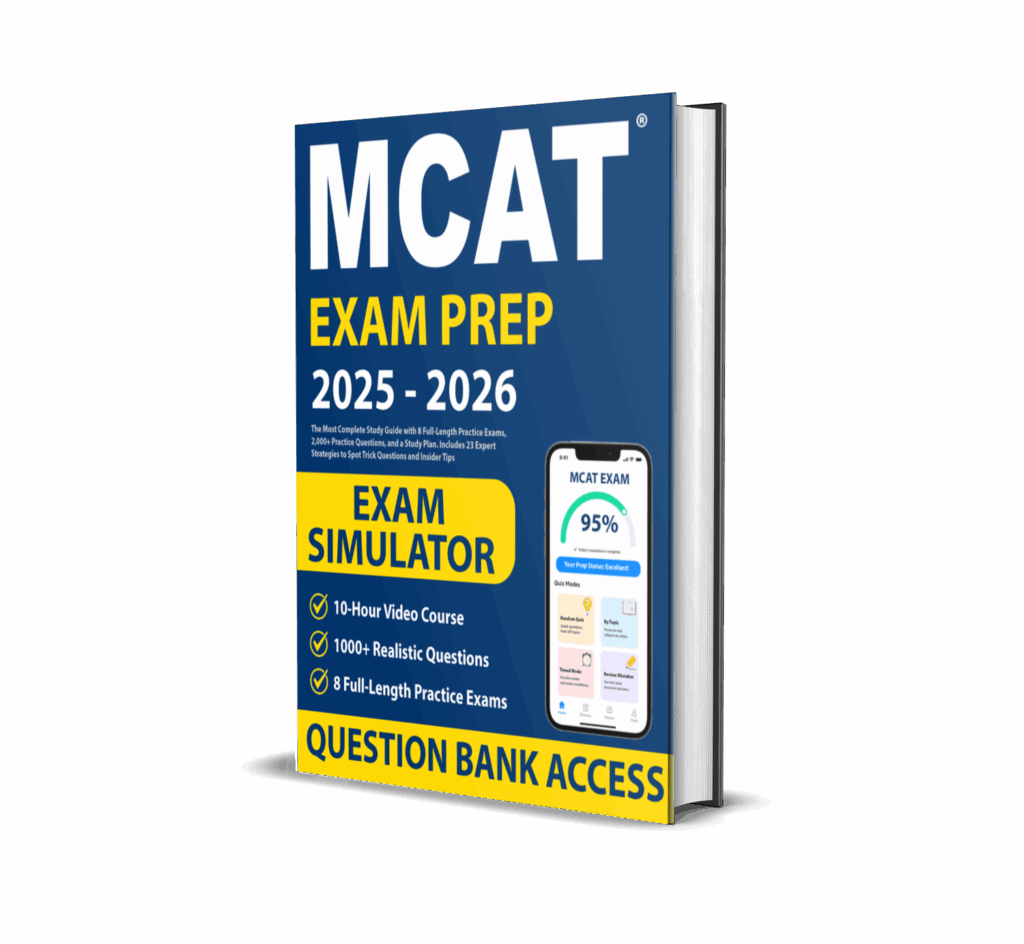
ARE YOU READY?
LET’S PRACTICE!
#1. Which of the following enzymes converts pyruvate to acetyl-CoA?
#2. Which structure of the brain regulates the endocrine system via the pituitary gland?
#3. Which of the following best describes a spliceosome?
#4. Which of the following contributes to genetic diversity during meiosis?
#5. Which cell type in bone is responsible for resorption?
#6. What is the purpose of the refractory period in cardiac muscle?
#7. Which of the following occurs during inspiration?
#8. Which enzyme catalyzes the rate-limiting step in glycolysis?
#9. What is the main function of the parathyroid hormone (PTH)?
#10. Which structure controls movement and coordination in the brain?
#11. Which vitamin deficiency leads to megaloblastic anemia?
#12. Which process uses proton gradients to produce ATP?
#13. Which of the following is involved in innate immunity?
#14. Which enzyme is responsible for cAMP breakdown?
#15. What is the main neurotransmitter of the parasympathetic nervous system?
#16. Which of the following statements best describes an amphipathic molecule?
#17. In which structure of the eye does most refraction of light occur?
#18. What is the purpose of the sodium-potassium pump?
#19. What is the function of surfactant in the lungs?
#20. Which pathway is stimulated by insulin?
#21. What type of inhibition occurs when both Km and Vmax decrease?
#22. What part of the ear transmits vibrations from the tympanic membrane to the cochlea?
#23. What is the major function of bile salts?
#24. Which of the following cells is multinucleated?
#25. What is the net gain of NADH from glycolysis per glucose?
#26. What is the function of myelin?
#27. Which process is responsible for mRNA degradation?
#28. Which hormone is responsible for milk ejection during breastfeeding?
#29. Which brain wave pattern is associated with REM sleep?
#30. What is the primary source of ATP in anaerobic conditions?
#31. Which protein is directly responsible for muscle contraction?
#32. What happens to the diaphragm during exhalation?
#33. What is the relationship between wavelength and frequency of light?
#34. What is the primary role of the pancreas in digestion?
#35. What mechanism allows glucose to enter most cells?
#36. Which of the following is an allosteric enzyme in the TCA cycle?
#37. What is the purpose of a signal peptide in a protein?
#38. Which bond is cleaved by proteases?
#39. Which RNA type contains anticodons?
#40. Which pathway is used by immune cells to destroy intracellular pathogens?
#41. What is the role of the liver in glucose homeostasis?
#42. What organ has both endocrine and exocrine functions?
#43. Which cell junction prevents leakage between epithelial cells?
#44. What is the charge of DNA at physiological pH?
#45. Which compound contains a β-glycosidic bond?
#46. Which structure is derived from the neural crest?
#47. Which neurotransmitter is most associated with the reward system?
#48. What happens to enzyme activity at very high temperatures?
#49. Which type of mutation changes a codon to code for a different amino acid?
#50. What is the final electron acceptor in anaerobic respiration in humans?


